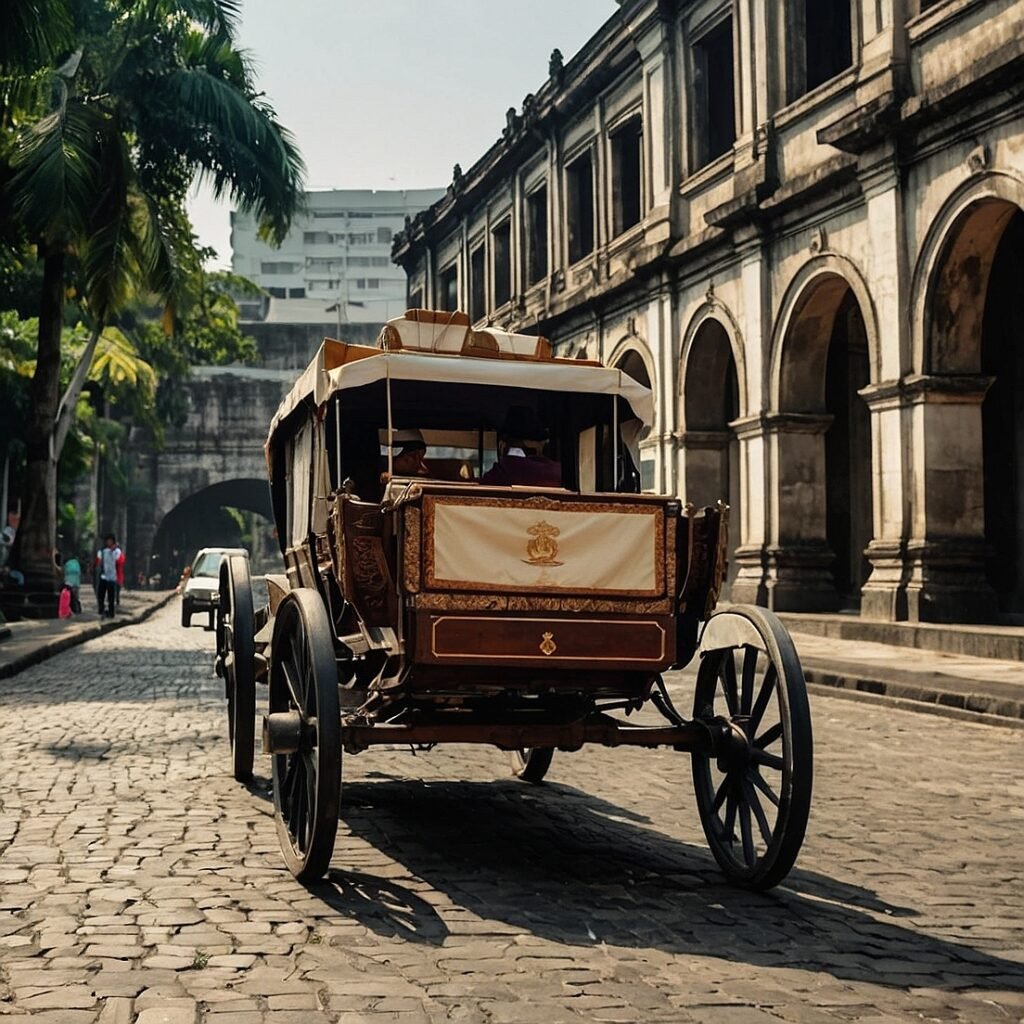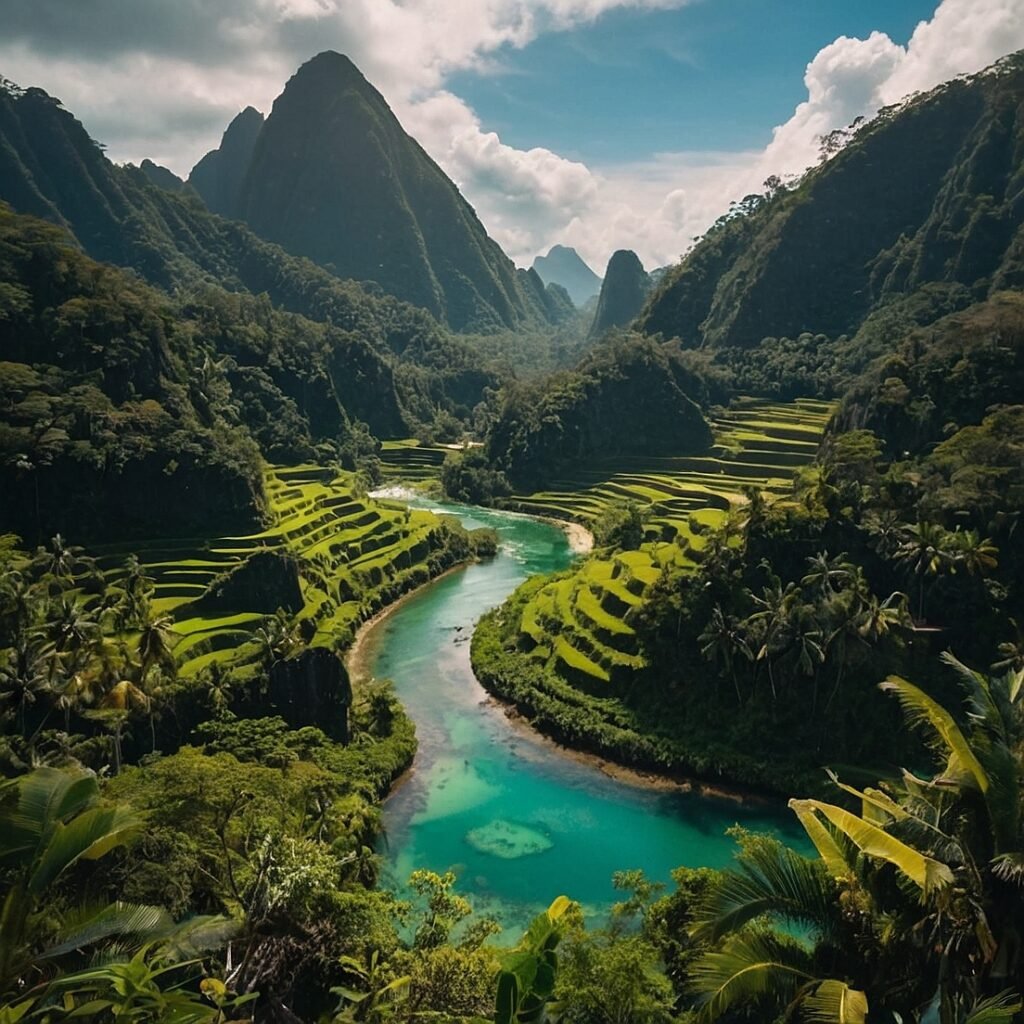Intramuros, known as the “Walled City,” stands as a testament to the rich and complex history of Manila, the capital city of the Philippines. This historic district, enclosed by massive stone walls and fortifications, has witnessed centuries of cultural evolution, colonial rule, and pivotal moments that have shaped the nation’s identity. As we delve into the depths of Intramuros’ past and present, we uncover a tapestry of architectural marvels, significant events, and enduring legacy that continues to captivate visitors and historians alike. This comprehensive exploration will shed light on the origins of Intramuros, its role during the Spanish colonial era, its transformation through various historical periods, and its current status as a cultural and heritage site of immense importance.
The Origins of Intramuros
Pre-Colonial Manila
Before the arrival of the Spanish conquistadors, the area now known as Intramuros was already a thriving settlement. The native Tagalog people had established a community led by Rajah Sulayman, with a strategic location at the mouth of the Pasig River. This settlement engaged in trade with various Asian nations, including China, Japan, and Arab countries, laying the foundation for what would become a significant colonial outpost.
Spanish Arrival and Foundation
The Spanish expedition led by Miguel López de Legazpi arrived in Manila in 1571, marking the beginning of a new era for the region. Recognizing the strategic importance of the location, Legazpi established a colonial city, with Intramuros as its center. The construction of the walled city began in 1590 and continued over several decades, resulting in a formidable defensive structure that would define Manila’s landscape for centuries to come.
Architectural Marvel: The Walls and Fortifications
The Great Wall of Manila
The walls of Intramuros, often referred to as the “Great Wall of Manila,” were an engineering feat of their time. Stretching approximately 4.5 kilometers in circumference, these massive stone barriers reached heights of up to 22 meters in some sections. The walls were constructed using a combination of volcanic tuff, coral stone, and mortar, materials chosen for their durability and availability in the region.
Fortifications and Bastions
To enhance its defensive capabilities, Intramuros was equipped with numerous fortifications and bastions. These included:
- Fort Santiago: The citadel guarding the entrance to the Pasig River
- Baluarte de San Diego: A circular fort at the southwestern corner
- Puerta de Santa Lucia: One of the main gates into the walled city
- Baluarte de San Andres: A strategically placed bastion for artillery
These structures not only served military purposes but also became iconic landmarks that have endured to this day.
The Spanish Colonial Era in Intramuros
Center of Power and Religion
During the Spanish colonial period, Intramuros became the seat of political, military, and religious power in the Philippines. The Governor-General’s palace, the Real Audiencia (high court), and numerous government offices were all located within its walls. Additionally, Intramuros housed several significant religious institutions, including:
- Manila Cathedral: The mother church of the Philippines
- San Agustin Church: The oldest stone church in the country
- Various convents and monasteries of different religious orders
These institutions played a crucial role in the spread of Christianity throughout the archipelago and the establishment of a colonial social order.
Education and Culture
Intramuros also became a center of education and culture during the Spanish era. The establishment of schools and universities within its walls contributed to the development of a learned elite class. Notable institutions included:
- Colegio de San Juan de Letran (founded in 1620)
- Universidad de Santo Tomas (originally located in Intramuros before moving to its current location)
These educational establishments played a significant role in shaping the intellectual and cultural landscape of colonial Philippines.
Intramuros Through the Ages
19th Century Transformations
The 19th century brought significant changes to Intramuros and the Philippines as a whole. The opening of the country to foreign trade in 1834 led to economic growth and increased cosmopolitanism in Manila. This period also saw the rise of the illustrados, an educated Filipino elite class, many of whom were products of Intramuros’ educational institutions. These individuals would later play crucial roles in the Philippine Revolution and the push for independence.
American Colonial Period
The end of Spanish rule and the beginning of American colonization in 1898 marked a new chapter for Intramuros. While the Americans initially maintained many of the existing structures, they also introduced changes to the urban landscape. The implementation of new sanitation systems, the widening of streets, and the introduction of modern amenities gradually altered the character of the walled city.
World War II and Destruction
The most devastating period in Intramuros’ history came during World War II. The Battle of Manila in 1945 saw intense fighting between Japanese forces and American and Filipino troops, resulting in widespread destruction. Many of the historic buildings, churches, and fortifications were heavily damaged or completely destroyed. The once-grand walled city lay in ruins, a shadow of its former glory.
Reconstruction and Preservation Efforts
Post-War Rebuilding
In the aftermath of World War II, efforts to rebuild and restore Intramuros began. However, the scale of destruction posed significant challenges. Initial reconstruction efforts focused on clearing debris and restoring essential infrastructure. It wasn’t until the 1960s and 1970s that more comprehensive preservation and restoration initiatives were launched.
Intramuros Administration
The creation of the Intramuros Administration in 1979 marked a turning point in the conservation of the walled city. This government agency was tasked with the restoration, development, and promotion of Intramuros as a historical and cultural site. Since its establishment, the Intramuros Administration has overseen numerous projects aimed at preserving the area’s heritage while adapting it for modern use.
Key Restoration Projects
Several major restoration projects have been undertaken to bring Intramuros back to life:
- Reconstruction of the walls and fortifications
- Restoration of San Agustin Church and Manila Cathedral
- Rehabilitation of Fort Santiago as a memorial and museum
- Development of Plaza San Luis Complex to showcase period architecture
These efforts have helped to recapture some of the walled city’s former grandeur and historical significance.
Intramuros Today: A Living Museum
Tourist Attraction and Cultural Center
Today, Intramuros serves as one of Manila’s premier tourist attractions and a vital cultural center. Visitors can explore various museums, galleries, and historical sites within its walls. Some of the most popular attractions include:
- Fort Santiago and Rizal Shrine
- San Agustin Church and Museum
- Casa Manila Museum
- Baluarte de San Diego Gardens
These sites offer insights into different aspects of Philippine history and culture, from pre-colonial times through the Spanish and American periods.
Educational and Cultural Programs
Intramuros continues to play an important role in education and cultural preservation. The Intramuros Administration organizes various programs and events throughout the year, including:
- Historical reenactments and guided tours
- Cultural festivals and performances
- Art exhibitions and craft demonstrations
- Educational workshops and lectures
These initiatives help to keep the history and heritage of Intramuros alive for new generations of Filipinos and international visitors alike.
The Economic Impact of Intramuros
Tourism and Local Economy
Intramuros plays a significant role in Manila’s tourism industry, contributing to the local and national economy. The table below illustrates the economic impact of tourism in Intramuros:
| Year | Number of Visitors | Estimated Revenue (in PHP millions) |
|---|---|---|
| 2015 | 850,000 | 425 |
| 2016 | 925,000 | 462 |
| 2017 | 1,050,000 | 525 |
| 2018 | 1,200,000 | 600 |
| 2019 | 1,350,000 | 675 |
| 2020 | 350,000* | 175* |
*Note: 2020 figures were significantly impacted by the COVID-19 pandemic.
This data demonstrates the growing importance of Intramuros as a tourist destination and its potential for further economic development.
Employment and Business Opportunities
The preservation and promotion of Intramuros have created numerous employment and business opportunities for local residents. These include:
- Tour guides and heritage interpreters
- Artisans and craftspeople
- Restaurant and café owners
- Souvenir shop operators
- Museum and gallery staff
The ongoing development of Intramuros as a cultural and historical hub continues to generate economic benefits for the surrounding community.
Challenges and Future Prospects
Preservation vs. Development
One of the primary challenges facing Intramuros is balancing the need for preservation with the demands of modern urban development. As Manila continues to grow and evolve, there is constant pressure to adapt historical spaces for contemporary use. The Intramuros Administration must carefully navigate these competing interests to ensure the walled city’s authenticity is maintained while allowing for necessary modernization.
Climate Change and Environmental Threats
Like many historical sites worldwide, Intramuros faces threats from climate change and environmental factors. Rising sea levels, increased rainfall, and more frequent extreme weather events pose risks to the ancient structures. Conservation efforts must take these factors into account to ensure the long-term survival of the walled city.
Digital Preservation and Virtual Access
In an increasingly digital world, there are opportunities to enhance the preservation and promotion of Intramuros through technology. Virtual tours, augmented reality experiences, and digital archives can help to:
- Reach a wider audience globally
- Preserve historical information for future generations
- Enhance visitor experiences on-site
- Protect fragile artifacts and structures from excessive physical interaction
Embracing these technologies will be crucial for the future of Intramuros as a historical and cultural site.
Conclusion
Intramuros stands as a living testament to the rich and complex history of Manila and the Philippines. From its pre-colonial roots through centuries of Spanish rule, American occupation, wartime destruction, and post-war reconstruction, the walled city has endured as a symbol of Filipino resilience and cultural heritage. Today, as both a popular tourist destination and a vital center of historical preservation, Intramuros continues to play a significant role in shaping the nation’s identity and economy.
The ongoing efforts to restore, preserve, and promote Intramuros demonstrate the importance of maintaining connections to our past while adapting to the needs of the present and future. As we look ahead, the challenges of balancing preservation with development, addressing environmental threats, and embracing new technologies will require innovative solutions and continued commitment from both government agencies and the public.
Intramuros remains not just a physical space enclosed by ancient walls, but a living, breathing part of Manila’s urban fabric. It serves as a bridge between past and present, offering valuable lessons in history, architecture, and cultural preservation. For visitors and residents alike, Intramuros provides a unique opportunity to step back in time while contemplating the future of heritage conservation in an ever-changing world.
As we continue to cherish and protect this invaluable historical treasure, Intramuros will undoubtedly inspire future generations to appreciate the depth and richness of Philippine history and culture. Its enduring legacy serves as a reminder of the importance of preserving our shared heritage, ensuring that the stories and lessons of the past continue to inform and enrich our present and future.
Disclaimer: While every effort has been made to ensure the accuracy of the information presented in this blog post, historical facts and figures may be subject to ongoing research and interpretation. Readers are encouraged to consult primary sources and official historical records for the most up-to-date and accurate information. If you notice any inaccuracies in this article, please report them so that we can promptly make the necessary corrections.




